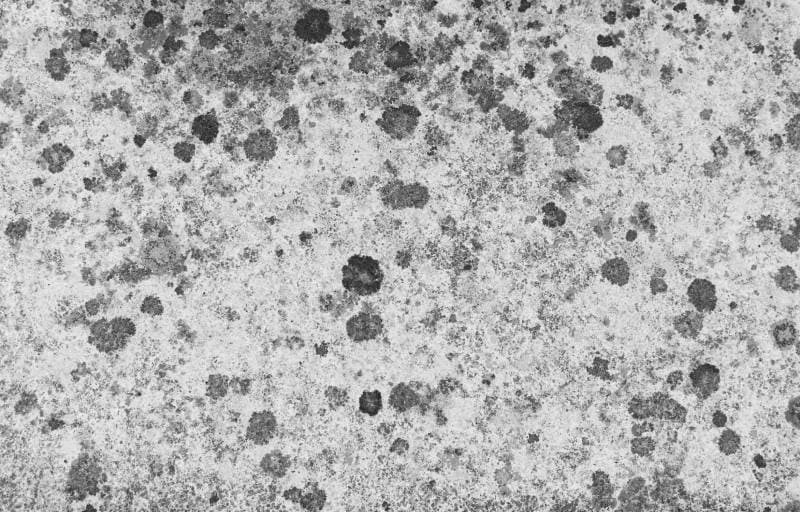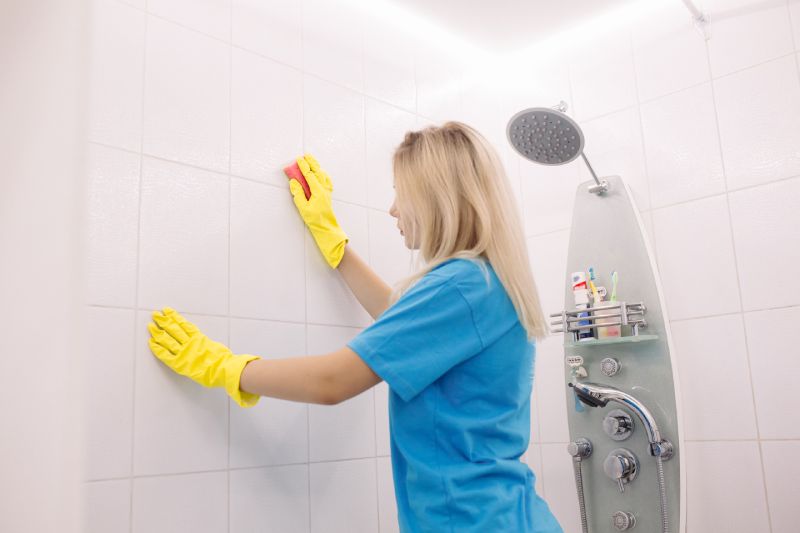In this comprehensive guide, we’ll unveil reliable and practical methods on how to get rid of black mold in the bathroom.
A clean and healthy environment is essential in every household, and bathroom mold is one of those, not only gross but also potentially dangerous things that could harm your health. Mold spreads easily and it’s hard to remove, so you should react on the first sign of its appearance in your bathroom.
Visible mold can be removed using a mixture of bleach and water, or a ready-made commercial mold cleaner.
Before you begin, make sure to wear a protective mask and gloves, and proceed with removing the mold. The mold is usually found on the tiles and the grout in between them, on the walls or wherever there is extensive moisture.
Use a brush or a sponge and scrub the mold gently to avoid releasing more of its spores into the air. After removing it, clean your bathroom thoroughly with the anti-mold cleaner and try to prevent it from growing back. Wipe the wet surfaces every time you use the bathroom, ventilate it, and wash the towels and the shower curtain regularly. This will reduce moisture and let the bathroom dry faster.
Signs of Black Mold in the Bathroom
Signs of black mold in bathrooms can be different but here are some main points to look out for:
- Darkening in the grout lines between the tiles
- Discoloration on the walls or tiles
- Texture changes on various surfaces, the mold can have a slimy, fuzzy, or velvety texture
- Mold can grow even behind the tiles, wallpaper, or bathroom fixtures, so make sure you check those from time to time
- Mold has a musty odor, so if you notice an unpleasant smell in your bathroom, you can suspect mold even if you can’t see it
Black mold can be especially gross and even toxic to humans if inhaled its spores for some time. Therefore, try to determine the type of mold first thing you notice any signs of it and get rid of it as soon as possible.

What Causes Black Mold in Bathrooms?
The most common issue that causes mold growth in bathrooms is excessive moisture and bad ventilation. If there is no proper ventilation in the bathrooms, the moisture will linger, create condensation and make a perfect environment for the mold to grow.
Water leaks from showers, toilets, faucets, or old pipes also create extra moisture in the bathrooms and can create even bigger water damage in your home. Damp materials like rugs, towels, and shower curtains, but also wallpaper or drywall can be a perfect ground for the black mold.
Finally, irregular cleaning or lack of maintenance makes it worse. If your bathroom doesn’t get cleaned regularly, the mold is easier to settle, and its spores spread on wet surfaces over time.
How to Get Rid of Black Mold on the Bathroom Ceiling?
To remove the mold from the bathroom ceiling you should use a simple homemade solution of detergent and warm water, or a solution made of white vinegar or diluted bleach mixed with the same amount of water. All of these options work perfectly for eliminating the mold.
Apply the solution to the mold all over the affected part of the ceiling, the best is if you put it in a clean spray bottle, and let it sit for about fifteen minutes. During that time the cleaning liquid will loosen and break the mold and make it easier to remove. After that, use a sponge or a soft-bristled brush and scrub off the mold making gentle, circular movements. After the scrubbing is done, wipe the area and let it dry.
Removing mold isn’t easy, and can take several attempts, especially if it covers a big part of the ceiling. If cleaning the mold is too much work for you, you may need to get professional help from a specialist or a cleaning company.
Black Mold on Bathroom Walls
Use the same mold-killing solution that we mentioned before. Mix detergent, white vinegar, or bleach with warm water and spray it on the affected area on the wall. Before you do that, protect your floors by placing a plastic cover which will prevent the drops and pieces of mold from spreading over your bathroom.
Let the solution stay on the moldy areas for ten-fifteen minutes and it should start to dissolve. If the mold doesn’t go away on its own, use a soft brush, or even an old toothbrush for spaces between the tiles, and scrub it off gently. At the end, make sure the walls have dried properly, to prevent the mold from growing back. You can use towels to dry your walls, but fans and dehumidifiers may do a better job.
Black Mold in Bathroom Sink
The same works for the sinks and drains, even though the mold may be more difficult to reach there. Before you prepare your cleaning solution, be sure to have your protective gear ready. Use gloves, a mask, and protective glasses if you have them, and clear out everything on or around the bathroom sink, soap dishes, toothbrush holders, and towels.
Apply the solution and let it dwell for about 15 minutes. Make sure you have covered all the mold-affected areas in connection to the sink, like the faucet and the drain. After the cleaning liquid penetrates the mold, scrub it off gently, and try to reach all the corners and curves of the sink, as well as the hard-to-reach places. Rinse and wipe all the surfaces after they are clean, and make sure they dry properly.
Black Mold in Bathroom Shower
Black mold just loves the edges of the shower and grout lines in between the tiles. A shower is a place that gets constantly wet, and even if it’s cleaned and maintained properly, the mold can eventually find its place there.
To get rid of it, make sure you use the mold-cleaning solution or products, scrub it off, and let the affected areas dry thoroughly before you use your shower again. Keep your bathroom ventilated and wash the shower curtain regularly, or remove the water from the shower doors with a squeegee every time you take a shower to prevent the moisture from lingering in your bathroom.
How Can I Keep My Bathroom Mold Free?
You can maintain a clean, dry, and mold-free bathroom in a few easy steps, too. First of all, you need to clean the bathroom regularly, and if it doesn’t have a window, make sure it has a proper ventilation system that will provide airflow and keep it dry.
After showering, wipe down the tiles and other surfaces with a squeegee or a towel to prevent the moisture from lingering inside. Don’t clutter the bathroom with unnecessary stuff, and bring towels or wet rugs out to dry.
If possible, use mold-resistant materials when building or renovating your bathroom like resistant paint for walls and ceilings, as well as the mold-resistant grout for tiles. There are also special preventive treatments for tile grout and corners that make a protective barrier against mold.

Is Black Mold in Bathrooms Dangerous?
Stachybotrys chartarum, commonly known as the black mold, which appears in our homes and bathrooms can be harmful and pose a risk to our health. However, not all types of mold are toxic, but this one can be, and longer exposure to it can harm your health.
Black mold in bathrooms can bring respiratory problems and throat irritation, which is more dangerous for people who already suffer from asthma or allergies. Similarly, all people with weaker immune systems or elderly people will be more affected by the exposure to mold in their homes.
Black mold in bathrooms can bring respiratory problems and throat irritation, which is even more dangerous for people who already suffer from asthma or allergies. Similarly, all people with weaker immune systems or elderly people will be more affected by exposure to mold in their homes.
If the problem with mold in your bathroom or other places in your home is too big for a regular spring cleaning, make sure to contact mold remediation specialists or professional cleaning companies to help you remove it properly.
